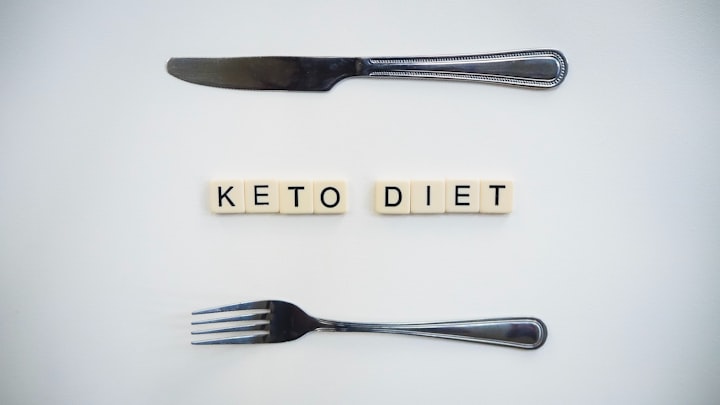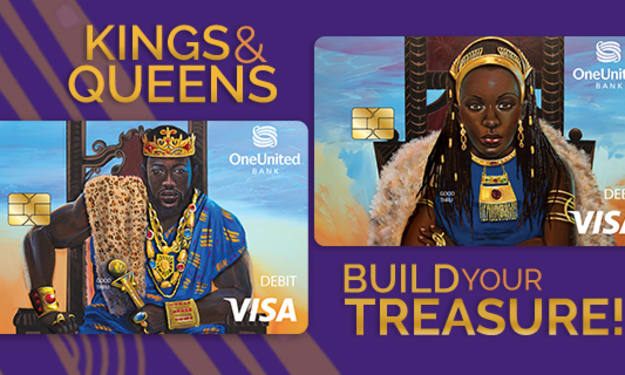Losing Weight with Keto for Beginners
Read this article to learn more..

Are you considering trying the keto diet to lose weight? If so, you're not alone! The keto diet has become increasingly popular in recent years as an effective way to shed pounds and keep them off. With the right knowledge and dedication, you can successfully lose weight with a keto diet. In this blog post, we will cover all the basics of the keto diet and give you the tools you need to get started on your journey to a healthier you. Read on to learn more about the keto diet and how it can help you reach your weight loss goals!
The Basics of the Keto Diet
The keto diet is a high-fat, low-carbohydrate diet that has been gaining popularity in recent years. The goal of the diet is to get your body into a state of ketosis, which is when your body begins to burn fat instead of carbohydrates for energy.
When on the keto diet, you must restrict your carb intake and replace those calories with healthy fats. Generally, it is recommended to consume less than 20 grams of net carbs per day to get your body into ketosis. Net carbs are total carbohydrates minus the amount of dietary fiber.
In addition to reducing carb intake, it’s also important to increase your fat consumption while on the keto diet. Healthy fats like olive oil, avocados, nuts, and seeds are all great sources of fuel for the body. Eating these types of foods can help you feel fuller longer and provide sustained energy throughout the day.
It’s also important to include moderate amounts of protein on the keto diet. Protein helps maintain lean muscle mass and provides essential amino acids that the body needs to function properly. Lean meats, fish, eggs, and dairy products are all great sources of protein.
Finally, it’s important to drink plenty of water while on the keto diet. Staying hydrated helps your body absorb nutrients from food more efficiently and can help reduce any side effects from transitioning into ketosis.
By following these guidelines, you should be able to successfully transition into ketosis and start losing weight. As always, it’s important to speak with your doctor before starting any new diet or exercise plan.
Why the Keto Diet Works
The Keto Diet is one of the most popular diets today due to its ability to help people lose weight quickly. The diet works by switching the body's primary fuel source from carbohydrates to fat. By reducing the amount of carbs consumed, the body is able to burn stored fat for energy, leading to rapid weight loss.
The Keto Diet encourages eating more high-fat foods, moderate amounts of protein, and very few carbs. The majority of the calories come from fat sources such as avocado, olive oil, nuts, and seeds. This helps to reduce your overall calorie intake and encourages your body to switch over to burning fat for fuel instead of glucose.
When your body is in a state of ketosis, it produces ketones as an alternative source of energy. As you continue to eat low carb meals and snacks throughout the day, these ketones are used up as fuel instead of glucose. This process helps the body to burn fat for energy instead of relying on glucose from carbohydrates.
The Keto Diet also offers numerous other health benefits such as improved mental clarity, increased energy levels, improved cholesterol levels, and reduced inflammation. Many people also report feeling less hungry when following the Keto Diet, making it easier to stick to.
Overall, the Keto Diet can be a great way to lose weight and improve your overall health. With a few minor adjustments and plenty of dedication, you can experience dramatic results with this low carb diet.
How to Start the Keto Diet
Beginning the keto diet can be an exciting yet daunting task. While the idea of eating high-fat, low-carb meals may seem strange at first, the benefits of the diet are undeniable. The key to success on the keto diet is to understand how it works and how to structure your meals. Here’s what you need to know before getting started.
First, you need to calculate your macronutrient needs. To do this, you will need to know your body weight and daily activity level. Based on these numbers, you can determine the ideal amount of protein, fat, and carbohydrates you should be consuming each day. This will help you create a balanced meal plan that fits into the keto diet framework.
Second, focus on eating high-fat, low-carb foods. Fat should make up 60-75% of your total calories, while carbohydrates should only make up 5-10%. Choose healthy fats such as olive oil, avocados, nuts, and fatty fish. For carbohydrates, focus on non-starchy vegetables like leafy greens, asparagus, and bell peppers.
Third, aim for moderate protein intake. Protein should make up 15-30% of your daily calories. The goal is to consume enough protein to maintain muscle mass, but not so much that it kicks you out of ketosis. Good sources of protein include poultry, eggs, fish, and legumes.
Finally, drink plenty of water throughout the day and monitor your progress. Keeping yourself well hydrated helps the body process dietary fats more efficiently, while monitoring your progress helps ensure that you stay on track with your goals.
Starting the keto diet can be overwhelming at first, but with a bit of preparation and determination you can reach your health and fitness goals. Remember to calculate your macronutrient needs, eat high-fat and low-carb foods, aim for moderate protein intake, and drink plenty of water throughout the day. With these tips in mind, you’re sure to see results from the keto diet in no time!
Tips for Success on the Keto Diet
1. Start slowly: Keto is a very restrictive diet, so it's best to start slowly and gradually increase the amount of keto-friendly foods you eat each day. Start with one or two meals that are low in carbs, and gradually increase to a full-fledged keto diet.
2. Prepare for cravings: It’s normal to crave non-keto foods when first starting a keto diet. To deal with these cravings, stock up on low-carb snacks and try to fill up on healthy fats instead.
3. Be mindful of snacking: Eating too many snacks throughout the day can kick you out of ketosis and derail your weight loss efforts. Stick to three meals per day and only snack if needed.
4. Increase fiber intake: Fiber can help you feel fuller longer and can also help keep your digestive system healthy. Try incorporating high-fiber vegetables like broccoli, kale, and Brussels sprouts into your meals.
5. Stay hydrated: Drinking plenty of water throughout the day will keep you hydrated and can also help control cravings.
6. Get enough sleep: Getting enough rest is important for any diet plan and can also help keep your energy levels up so you can stay motivated throughout the day. Aim for at least seven hours of sleep per night.
7. Track progress: Keep track of your progress by taking measurements and weighing yourself regularly. This will help you stay motivated and make adjustments to your diet as needed.
8. Find support: Having people to lean on for support can make the process much easier. Consider joining a keto diet support group or talking to a dietitian or nutritionist about your goals and concerns.
Foods to Eat and Avoid on the Keto Diet
The Keto Diet is all about eating foods that are low in carbohydrates and high in fat. This means focusing on eating nutrient-dense, whole foods that are rich in healthy fats, moderate in protein, and low in carbs.
On the Keto Diet, there are certain foods that you should focus on eating, as well as others that you should avoid or limit. It’s important to get familiar with both types of foods so that you can make the most out of your diet.
Foods to Eat:
Healthy fats like avocado, coconut oil, butter, ghee, olive oil, and fatty fish
Protein sources like eggs, grass-fed beef, organic poultry, wild-caught fish
Non-starchy vegetables like leafy greens, broccoli, cauliflower, mushrooms, Brussels sprouts
Low-carb fruits such as berries, lemons, limes, and grapefruits
Nuts and seeds like almonds, walnuts, pumpkin seeds, and sunflower seeds
Foods to Avoid:
Processed grains such as bread, pasta, cereal, and other wheat products
Highly processed snacks such as potato chips and cookies
Added sugars like white sugar, maple syrup, and honey
Highly starchy vegetables such as potatoes, corn, and peas
Fruit juices and smoothies
By focusing on eating the right types of foods while limiting those that are high in carbs, you’ll be able to successfully start and stick to the Keto Diet.
Sample Keto Diet Meal Plan
Breakfast:
2 eggs, cooked however you like
2 slices of bacon
1/2 avocado
Snack:
1 ounce of almonds
Lunch:
Grilled chicken salad with mixed greens, cucumber, cherry tomatoes, and avocado
2 tablespoons of olive oil and vinegar dressing
Snack:
1/2 cup of sliced celery with 2 tablespoons of almond butter
Dinner:
Grilled salmon with asparagus
1 tablespoon of butter
Snack (optional):
1/2 cup of raspberries
Keep in mind that everyone's nutritional needs are different, so it's important to adjust your portion sizes and food choices based on your individual goals and preferences. Additionally, make sure to consult with a healthcare professional before starting any new diet plan.
If you want to learn my #1 way to master the keto diet, click here.






Comments
There are no comments for this story
Be the first to respond and start the conversation.